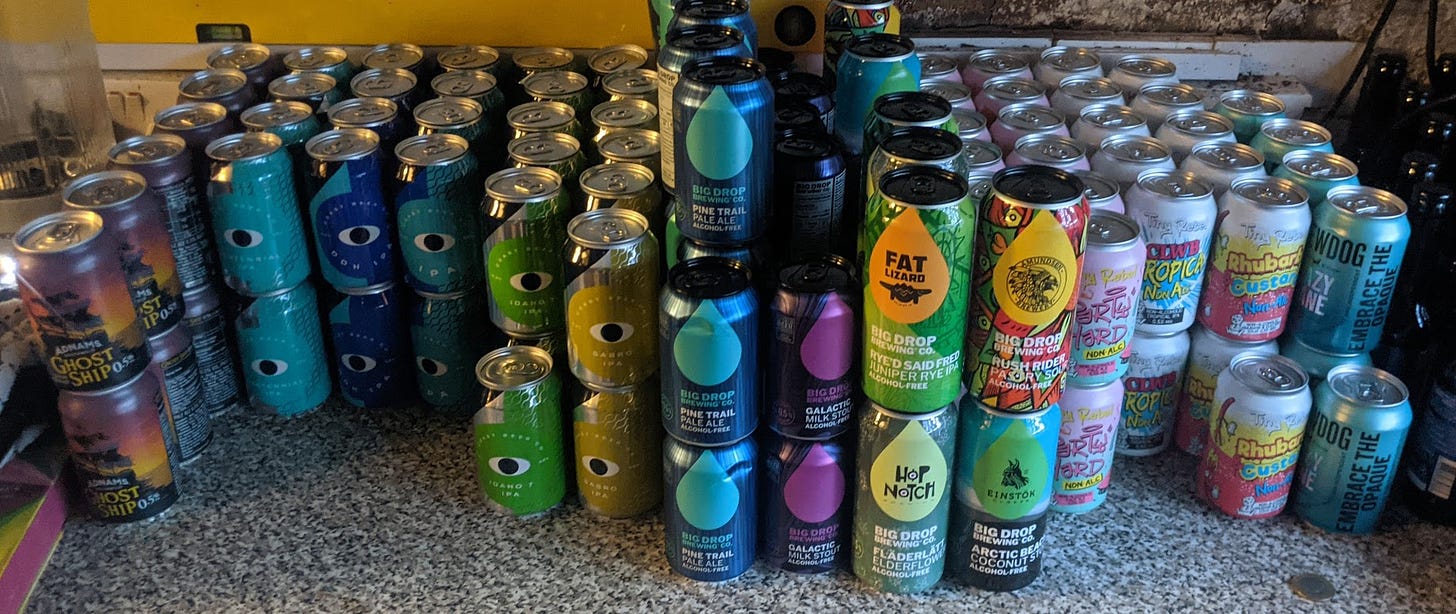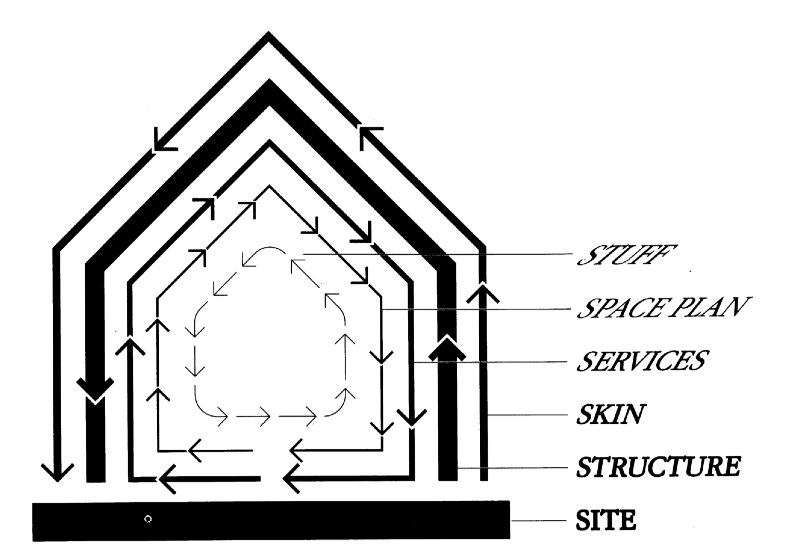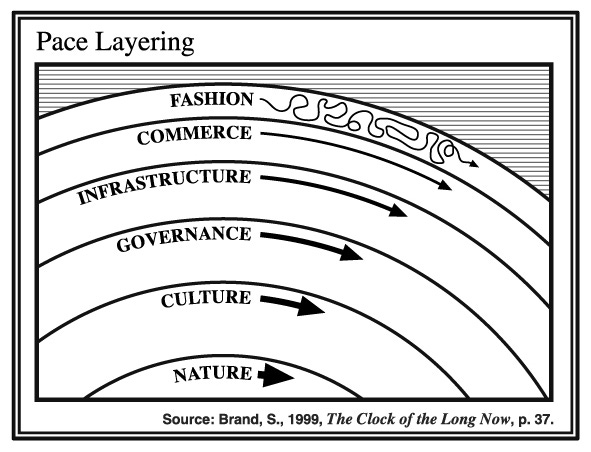Hello!
Fake spring caught me out hard. Last weekend me and Esther ate ice creams in May sunshine which left us woefully unprepared for the temperature drops and the grey skies this week. Still, it’s lighter earlier, and real spring is on the way. (I know this because the little yellow flowers are out on my forsythia and according to a̶n̶c̶i̶e̶n̶t̶ ̶l̶o̶r̶e̶ my mum that’s the first sign! Love this weird new lockdown connection with nature).
Three weeks done on digital identity at GDS. I am amazed at how much the team has managed to do in those three weeks. We have a clear vision, strong elevator pitch, and enough information to start defining meaningful work for teams. Which means we are going to be recruiting soon because we need more people to bring the dream alive…
Not drinking
I’ve hardly been drinking over the last four months.
I alluded to this in the Get By lyrics last week (“and my goals, just to stop smoking, and stop drinking”) but today I’m going to be more direct.
I never thought I drank too much until 2019. I was - and still am tbh - shocked to find that 60% of UK adults say they drink less than the recommended 14 units a week. I know there is under-reporting but I’d assumed that most people failed to keep to those seemingly-tiny limits. Maybe not.
I’ve slowly realised that this is because I hang out with people who drink more than the average. I talked last week about my disco family (love to you all!) but one constant of clubs is…booze, booze, and more booze. My whole framing of what ‘drinking’ is has been shaped by the social proof that exists in a world that I’ve created for myself.
Obviously, at 42, I’m not drinking in clubs much. Over the years my drinking changed from a big release at the weekend to a slow steady drip throughout the week. My work responsibilities have got more stressful - and if I’m honest there have been periods when I’ve used alcohol to switch off.
And then came the pandemic. Lockdown meant I drank more. I had a weird Campari phase. I enjoyed the explosion in craft beers that the all-seeing capitalist sensing-machine surfaced at the mini-Sainsburys. I developed a taste for whisky. Bad habits. Weight gain. Terrible sleep. Pretty grim.
On a whim, when November restrictions came in, I did dry lockdown. I relaxed over Christmas but did dry January and continued that into February. I’m not not-drinking completely. A couple of drinks a couple of times a week maybe. But I am now one of the 60% who claim they drink less than 14 units.
My big thing has been switching to non-alcoholic beers. Once I found the ones I love (Pine Trail Pale Ale, Galactic Milk Stout, Party Hard, Nirvana IPA, Coast IPA) I felt zero compulsion to drink real beer. These scratch that itch. It’s a direct like-for-like replacement (a bit like switching from Coke to Diet Coke - feels odd at first, takes a bit of getting used to, but over time it turns into the thing you want and need).
Obviously I’ve gone over the top with it…some things don’t change about me!
And I feel great. My sleep isn’t nearly as broken. I’ve lost a stone and a half. My skin’s better. I’m less argumentative with Esther. I’m on it with life admin and starting a new high-pressure job. I’m getting up and going for a bike ride every day before work.
But - most of all - it’s made me realise just how awful hangovers are. I’d just got used to them as a fact of life but these days I’m feeling such a strong aversion that just thinking about them stays my hand. (Also, I’m hardly buying paracetamol any more, which is kind of eye-opening in itself.)
I know backsliding is inevitable. Perhaps this is just a blip? But after my first full-on stressful week at GDS, when I would normally get drunk to celebrate/escape, I calmly reached for a Pine Trail and enjoyed the evening just as much. So maybe not a blip?
(Finally, I can’t do this section without a shout to Neil Williams. He was one of the first people in my network to go on this journey publicly. He was tweeting about non-alcoholic beers a few years ago and that concept has just been sat there, like a sleeper cell in my brain, waiting for the right moment to go rogue. Thank you Neil 🙏 )
Pace layers
I talk a lot about pace layers at the moment. Paul Downey was the first one to tell me about pace layers in relation to How Buildings Learn by Stewart Brand:
Pace layers here means that different layers of a building change at different rates of time. ‘Stuff’ changes daily (coffee cups onto my desk in the morning and back down to the kitchen later). ‘Space plan’ changes less often (I added a desk into this room to make it an office). And so on through ‘services’ (every few years we change an appliance), ‘skin’ (once a decade we redecorate), ‘structure’ (the renovation we’re planning should last decades) and ‘site’ (this house was built 100 years ago).
Pace layers are just feedback loops that let the building adjust to the different people using it. It’s one of the good systems thinking things.
Stewart Brand went on to apply this to much bigger systems - like the ‘whole world’ - in this Long Now talk about Pace Layers Thinking:
I find myself thinking in terms of pace layers a lot.
For example, this newsletter is one of my pace layers for thinking. One reason I started it was that I was missing a thinking pace layer in between “tweeting thoughts” (kind of daily) and “blogging thoughts” (every few months):
Thinking - constant, chaotic, all the time, uncommitted ideas
Tweeting - every day or so, semi-structured, sketches of thoughts
Newslettering - every week, lots more structure, prototypes of thoughts
Blogging - every few months, loads of structure, shipped thoughts
Book writing (?!?) - (not yet but, Will, this neat structure demands it!)
Another example is how I think about planning work at work:
Vision - timeless, where we are heading, intentionally a bit vague
Goal - a year or two, end-state we are aiming for, more concrete
OKR - three months, guide to our now-work, specific and measurable
Epic/story - a week or two, the team’s now-work, broken into parts
Task - a day or two, a person’s now-work, bounded and achievable
One big thing I like about pace layers is that they perform a miracle. They let you connect big long-term goals to the minutiae of everyday work. Quick-thinking ‘strategy hand wavers’ are lovely until you realise they don’t know how to turn their big ideas into meaningful work. JFDI people are lovely until you realise they’re all charging off in different directions. Pace layers are a tool to connect these into a single living breathing system that makes progress to a long-term goal.
The other thing I like about pace layers is that they are - like Mayan calendars - cycles-within-cycles. When you get it right and they’re all humming along nicely the constant starting-doing-finishing-reflecting loops keep clashing with each other in interesting ways. If you’re paying attention you can’t help but learn how to make improvements to complex systems.
These two things - connecting long-term strategy to day to day work, and making improvements to complex systems - are the work I’m here to do.
Listening
Every Friday I ride to Dalston to drop my brother off at his studio. Coming back I listen to an episode of Talking Politics: History of Ideas. My history lecturers did NOT communicate as well as David Runciman. This week he explained Nietzsche’s Genealogy of Morality in a way that made me semi-understand it. The real joy is listening to the ideas unfold over a series…
Reading
Pete sent me a copy of Candide by Voltaire so I’m reading that. It’s much more informal, snappy and charming that I expected. Also it’s made me realise that I have a cheat code - sending me a book in the post gains you instant access to my heart. My friend Matt started doing this a few years ago and it’s a beautiful thing.
Watching
Finally got round to watching Upstream Colour. Esther said it might be the weirdest film that she’s ever seen. I kind of loved it - the strong synaesthetic vibe in the abstract sound sequences melted me - although if I’m completely honest I had no idea what was going on for most of it.
Cooking
I made another staple. Ottolenghi’s conchiglie with yoghurt, peas and pine nuts. It is a cliche that he combines unexpected ingredients to make something incredible but it’s also true. Try this! It’s from Jerusalem which is my all-time favourite cookbook for all the reasons…
Also. I love saying the word ‘conchiglie’ (shell-pasta) after finally learning how to pronounce it properly(ish). kon-key-lee-ay. Such an elegant word with a lovely, what do they say in the craft beer world, mouthfeel :)
Feels like this one was super-long. Thank you for reading all the way to this sentence. I guess I’m still finding my range for this weekly pace layer.
Also, on reflection, this week is all men. Apart from my mum. She would be the first one to tell me this isn’t good enough. And she’d be right.
Stay safe,
Will





In the US--I don't think it's different in Britain--the top 10% of drinkers are responsible for 70% of the alcohol market. Seventy. Percent. These include people who consume the equivalent of a bottle of liquor *per day*.
Which is to say, this market is lumpy, like all markets if you can only identify the lumps. A tiny fraction of people are responsible for the overwhelming majority of consumption of a particular thing. Does this extend to actions too? I suspect it might. Look for the outliers in the pace layer. Harder to see at the site level, but it's there.